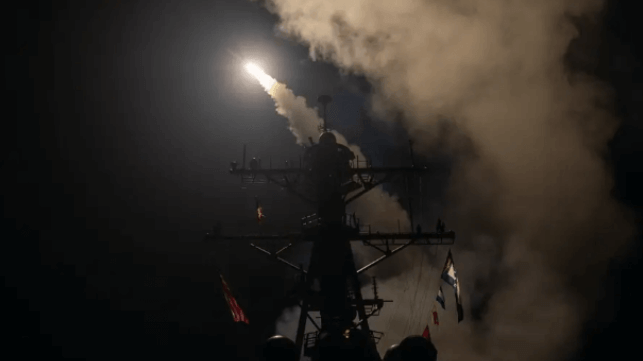Admiral: Houthi Fight is US Navy's First Combat Operation Since WWII

The U.S. Navy's combat operations off Yemen have eclipsed anything seen in decades, according to the admiral in charge, and the service may not have seen such an intense exchange of fire since World War II.
The U.S. Navy has seen a lot of action over the past seven decades, but it has been a long time since it has had a kinetic engagement with an enemy capable of shooting back at scale. Even after multiple Navy airstrikes, Houthi forces maintain a robust maritime strike capability - robust enough to force U.S. Navy surface combatants to expend surface-to-air missiles in self-defense on multiple occasions. Houthi antiship missiles have twice managed to get within gun range of allied warships (one British and one American).
"I think you'd have to go back to World War II where you have [U.S. Navy] ships engaged in combat," Vice Adm. Brad Cooper told CBS' Norah O'Donnell."When I say engaged in combat, where they're getting shot at, we're getting shot at, and we're shooting back."
There may be more recent examples, but none as intense. The USS Maddox exchanged fire with North Vietnamese torpedo boats in the first Gulf of Tonkin Incident, and vessels on both sides received some amount of damage. The USS Samuel B. Roberts took severe damage from a mine planted by Iranian forces in 1988, prompting U.S. retaliatory strikes and the sinking of the Iranian warship Sahand. More recent incidents have tended to be isolated or asymmetric, like the terrorist small-boat attack on USS Cole in 2000, or the first round of Houthi missile attacks back in 2016.
The Houthis are widely viewed as an Iranian proxy force, and Adm. Cooper made clear that they would not have these capabilities without Iranian support. Iran has been supplying the group with equipment for years, and he said that Iranian intelligence and targeting are also powering the group's attacks on shipping.
"For a decade, the Iranians have been supplying the Houthis. They've been resupplying them. They're resupplying them as we sit here right now, at sea," he said.
While the U.S. has not hit back at Iran overtly, U.S. officials have quietly confirmed a cyberattack on the Iranian spy ship Behshad, which was widely believed to be providing targeting data on shipping to the Houthis. Iran has not confirmed the cyberattack, but has issued a stern warning against anyone who might think about interfering with the ship. Behshad recently left the area of operations and put into port at Djibouti, anchoring next to China's overseas naval base.
